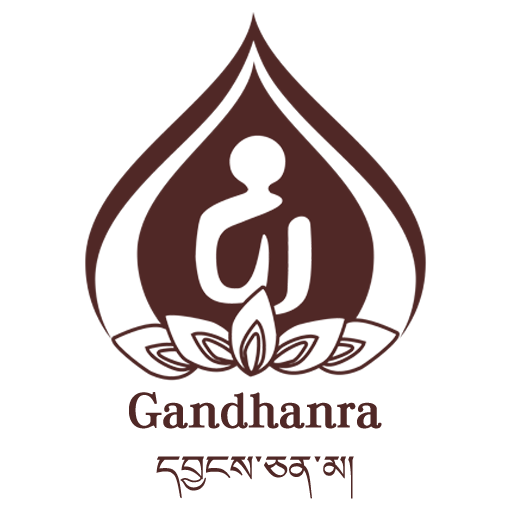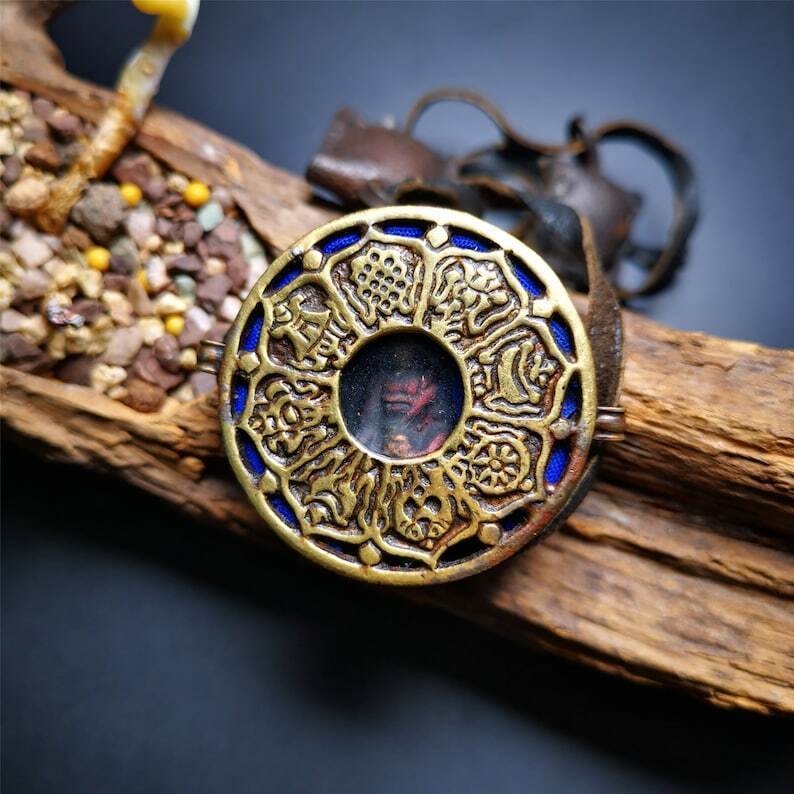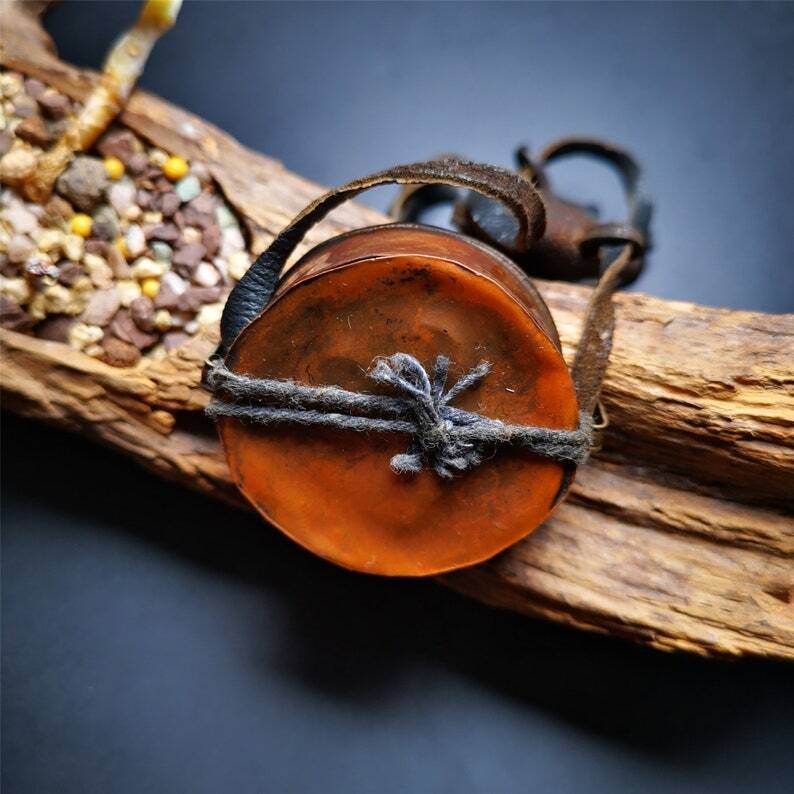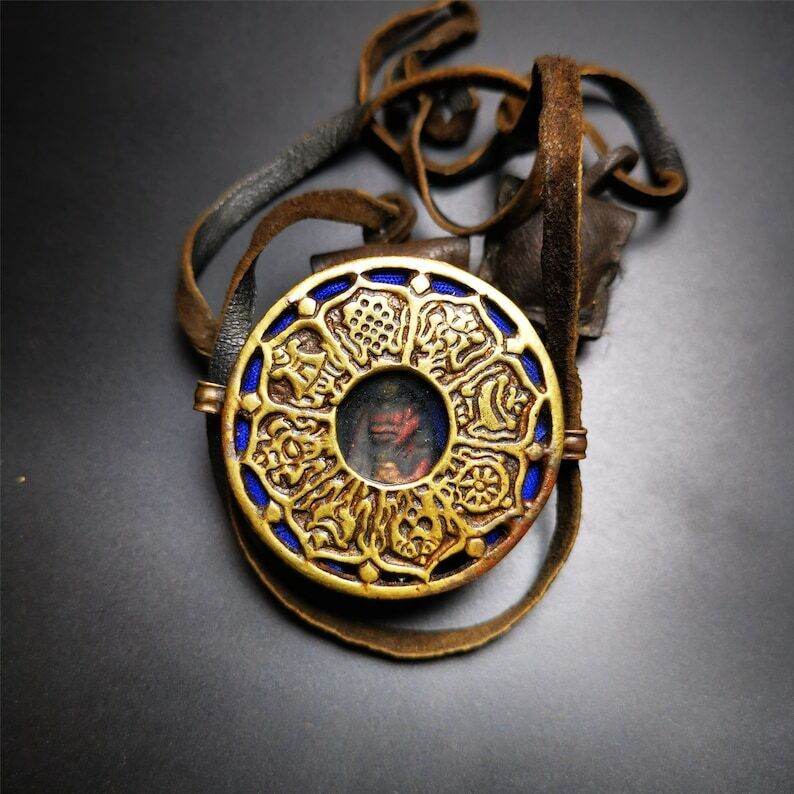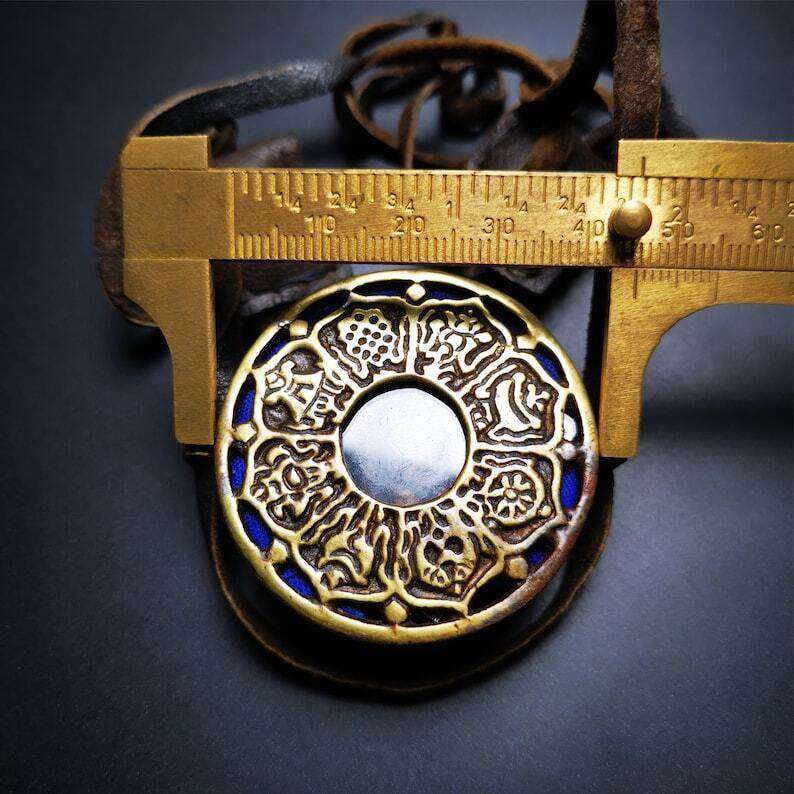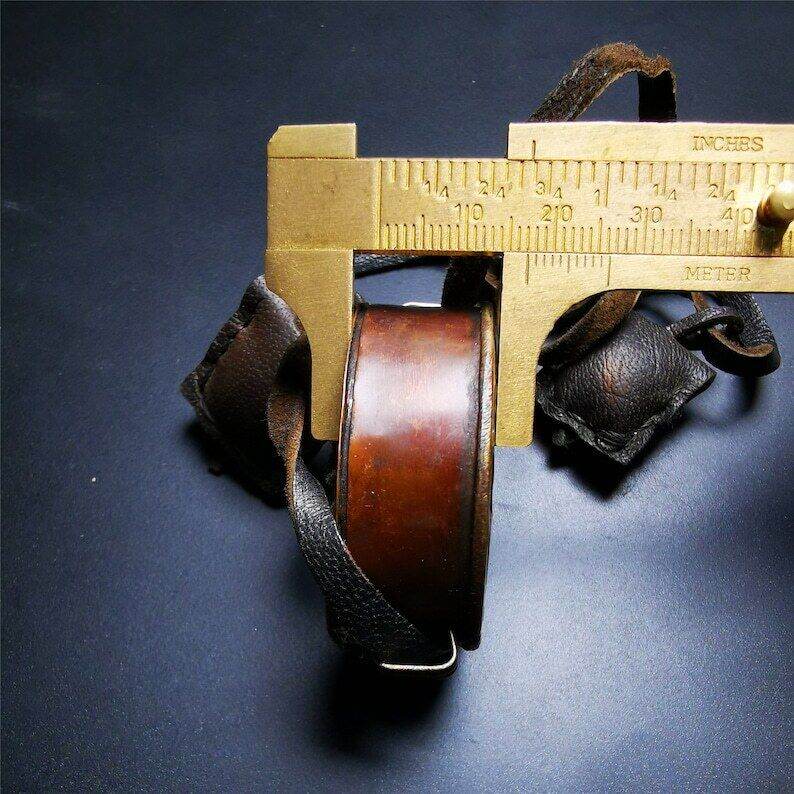Gau Ghau Shrine of Bhaisajyaguru,Medicine Buddha, Buddhist Altar Amulet Pendant
Gau Ghau Shrine of Bhaisajyaguru,Medicine Buddha, Buddhist Altar Amulet Pendant
Impossibile caricare la disponibilità di ritiro
This unique round shape Gau box was collected from Gengqing Monastery,Tibet,it's antique mini buddhist alter pandent amulet.
There is a sacred suite of Eight Auspicious Signs endemic (Ashtamangala)carved on front
An old handmade Buddha statue, Medicine Buddha sculpture made of Tsa Tsa inside it,and other relics for storage.
Two small bags on both sides of the leather cord also contain holy relics.
You can make it into a necklace,or just put it on your desk,as an altar.
DETAILS
100% Handmade
Pendant material:copper,brass
Size:
Diameter: 45mm / 1.77inch
Thickness: 17mm / 0.67inch
Gau Shrine:
A "Gau" or "Ghau" is a Tibetan Buddhist amulet container or prayer box, usually made of metal like silver, brass, copper or gold, and can be worn as jewellery if small enough. They are portable shrines that opens to a concealed inner space, and is traditionally used by Tibetan Buddhists to hold a picture of their favourite diety or Lama, a folded up scroll of sacred mantras, special herbs or sacred relics, and prayer flags.
- This Tibetan Gau Portable Shrine can be worn hanging from the neck or from a waist sash or belt.
About Medicine Buddha
Bhaisajya is the Buddha of healing and medicine in Mahayana Buddhism. Commonly referred to as the "Medicine Buddha", he is described as a doctor who cures dukkha (suffering) using the medicine of his teachings.
Bhaisajyaguru is Medicine Master and King of Lapis Lazuli Light and the Buddha of healing and medicine in Mahayana Buddhism. Commonly referred to as the "Medicine Buddha", he is described as a doctor who cures dukkha (suffering) using the medicine of his teachings.
Bhaisajyaguru's original name and title was raja (King), but Xuanzang translated it as Tathagata (Buddha). Subsequent translations and commentaries followed Xuanzang in describing him as a Buddha. The image of Bhaisajyaguru is usually expressed with a canonical Buddha-like form holding a gallipot and, in some versions, possessing blue skin. Though also considered to be a guardian of the East, in most cases Akshobhya is given that role. As an exceptional case, the honzon of Mount Koya's Kongobu Temple was changed from Akshobhya to Bhaisajyaguru.









